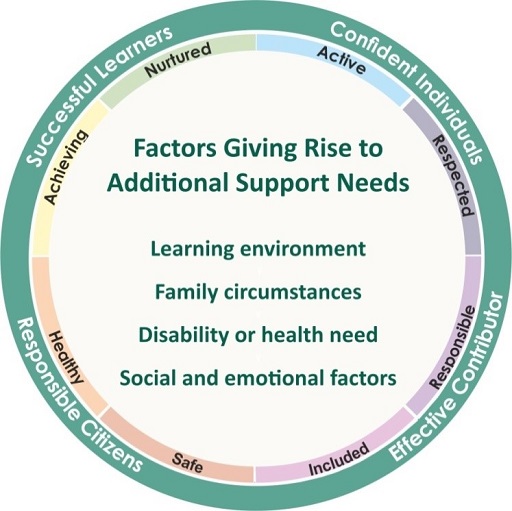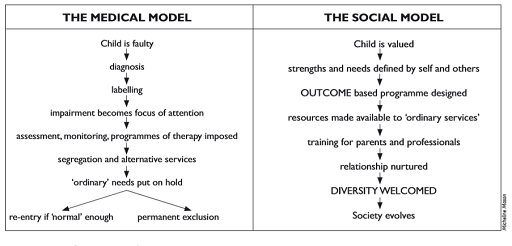Use 'Print preview' to check the number of pages and printer settings.
Print functionality varies between browsers.
Printable page generated Friday, 21 November 2025, 3:33 PM
Language, definitions and reflective learning
Introduction
Have you ever wondered what it’s like to be a three-year-old child doing something that seems simple to an adult, but is a new experience for a child? Can you imagine being three again and trying to pour milk from a jug and the adult next to you is trying to do too much to help, or even doing nothing to help?
As adults, how do we learn and judge the amount of additional help we should give to children? This week introduces you to essential information needed for working with children who require additional support and you will identify some of the basic skills for building confidence in this area.

The content of Week 1 links to module learning outcomes (LO) 1 and 2:
- LO1 Identify the broad range of additional support needs (ASN) that children in early learning and childcare (ELC) may have.
- LO2 Understand the value of inclusive practice, including the importance of celebrating the strengths and opportunities that children who need additional support bring to a setting.
By the end of Week 1 you will be able to:
- define terms used in relation to additional support for learning
- start to identify the range of needs that children may have.
Continue to 1.1 Having confidence in your knowledge and abilities.
1.1 Having confidence in your knowledge and abilities
Being confident in knowing when and how to support children you are working with requires you to understand and appreciate their likes and dislikes, and their strengths and daily challenges. It’s important to appreciate unique qualities like temperament to know how best to respond.
Being best equipped to support children involves you thinking about the way you work and the environment around the child. You may have to challenge previously held assumptions and spend time getting to know each child to help inform the support you provide.
A common misconception is that further external resources are always needed to identify requirements for additional support. You may need advice from other professionals and specific equipment, but in many cases where children need additional support you will already have the knowledge and resources.
The video below illustrates this point.
Elizabeth Henderson – ‘You are the most powerful tool in the toolbox’
Dr Elizabeth Henderson is an early years specialist currently working in a Scottish Local Authority. Watch the following short clip where she talks about the importance of practitioners in supporting children.
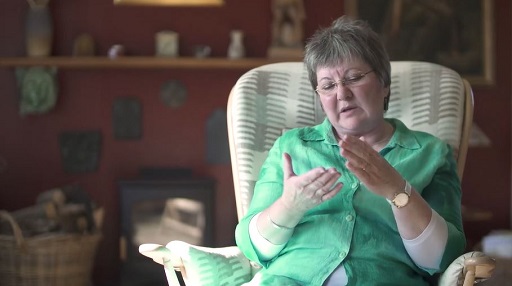
Discussion
In this video clip Elizabeth talks about having a ‘toolbox’, meaning there are several tools you need to be able to support children with additional needs. She talks about the ‘tools’ of
Elizabeth also talks about the importance of keeping a reflective journal to help with developing your knowledge. There is a reflection table included at the end of each week’s session (and in your learner journal) for you to use .
In Section 1.3 of this session you’ll identify your own strengths in relation to how well you think you can assess the needs of the children in your setting. However, much of what you already do in your practice will help you do this: for example, observing children will help you to identify their needs. When you build up a picture of their needs you can plan appropriate activities for them. All children require support at different times, but this may need to be provided for some children more consistently. Children who have these requirements are often viewed as having ASN.
The next section looks at some of the language associated with
1.2 Understanding additional support for learning
Learning the language
In the same way that understanding a new language can help you make sense of a country, understanding the language around additional support for learning and inclusion will help you understand your role in supporting children. This is because where there is shared understanding of a language, there is often better communication.
This section looks at definitions of how Scottish legislation defines the terms ‘additional support needs’ and ‘inclusive education’.
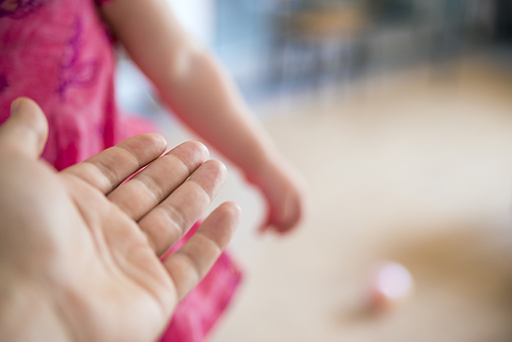
Defining ‘additional support needs’
A Blueprint for 2020: the expansion of early learning and childcare in Scotland (Scottish Government, 2018a) states that:
ELC provision must therefore be delivered in a way that ensures equality of access for, and accounts for the varying needs of, all children. Children should be able to learn free from discrimination and in settings which actively tackle health and social inequalities. Additional support may be required, over the short or the long term, to overcome needs arising from the care and learning environment, family circumstances, health needs or disability or social and emotional factors. Those that may require additional support may include, for example, children with disabilities, children with English as an additional language, Gypsy/Travellers, highly able children, asylum seeking/refugee children and Service children (children from Armed Forces families) (p. 31).
This statement illustrates that ‘additional support needs’ is a broad term that applies to children or young people who, for whatever reason, require additional support in the long or short term in order to help them make the most of their education and to be fully included in their learning. It applies to children eligible for funding for ELC and children from the age of two, including those children in foster or
Additional support for learning aims to reduce barriers that may affect children’s learning. Such barriers may be physical ones in the environment, barriers caused by attitudes or because of routines in a setting not being adapted to suit the needs of children. Figure 1.3 summarises some of the factors that can give rise to children having a need that means that additional support is required.
Defining ‘inclusive education’
According to the Scottish Government’s Guidance on the presumption to provide education in a mainstream setting (2019), inclusive education is underpinned by:
The belief that education is a human right and the foundation for a more just society. An inclusive approach which recognises diversity and holds the ambition that all children and young people are enabled to achieve to their fullest potential is the cornerstone to achieve equity and excellence in education for all of our children and young people (p. 4).
The Health and Social Care Standards (Scottish Government, 2018b) include guidance about the responsibilities of providers of children’s services. A main principle of the standards is for individuals to be included, as illustrated by the statement, ‘I am supported to participate fully and actively in my community’ (p. 5).
Scottish Government legislation and policy is committed to inclusive education for all children. ELC practitioners have a vital role in being able to identify children who require additional support so they can reach their full potential. There is more about Scottish legislation and policy relating to children who require additional support in Week 6 of this module.
Next you’ll look at the social and medical model of disability.
The social and medical model of disability
The idea of inclusive education is based on the
The
The social model of disability
This model is a way of understanding the world that says people are disabled by barriers in society rather than by their difference or impairment. If barriers are removed, a person may still have an impairment but they would not be disabled. For example, an early years setting without ramps connecting the indoor and outdoor areas would be disabling a child who uses a wheelchair from moving freely around the setting.
The social model was developed by disabled people themselves in the 1970s as part of a civil rights movement campaigning for equality and seeking to change attitudes towards disability. It is part of the United Nations Convention on the Rights of Persons with Disabilities, which states that:
Persons with disabilities include those who have long term physical, mental, intellectual or sensory impairments which in interaction with various barriers may hinder their full and effective participation in society on an equal basis with others (p. 4).
The medical model of disability
This model is regarded as being a negative approach to disability because people with disability are seen as being less able because of their disability. This model will be returned to in Week 2.
Figure 1.4 summarises some of the main points of the medical and social model.
You will notice that the definitions and explanations in this section are all about identifying factors that can be barriers to children being able to be able to participate fully in education and in society.

Next you’ll look at how you can adapt routines and activities in your setting to provide additional support.
Providing additional support
Assessing when and how much support to give to a child with activities can be tricky. All children require support at some point; but how much support? And what is the ‘right’ level? This point is illustrated by the following picture of a child pouring milk from a jug into a bowl.

In this picture you can see how Anna, aged three, is pouring a milk into a bowl. Anna has developed the confidence and dexterity to help herself. Instead of waiting passively for adults to take control, Anna is independently taking care of herself.
This independence will connect with other areas of Anna’s experience from personal care, such as using the toilet to deciding what risks to take in a physical activity such as climbing.
Pouring the milk into a bowl requires good eyesight and the ability to judge distance. Anna needs to have strong hands and arms, and the motor skills to be able to grip the jug.
When Anna first attempted to pour milk she may have needed guidance from an adult, who will have judged when to support and when to step back. And of course, there will have been spilt milk!
Perhaps Anna is confident? Perhaps she is encouraged to do things for herself at home? Another child might feel differently. They might feel anxious about having a go, but they might not know why or be able to tell you.
Activity 1.1 Imagine thinking like a small child
Having looked at the photo of Anna, try to imagine what experiences or emotions might be influencing a child’s approach to pouring milk into a bowl.
Click on the image below then on the larger interactive version itself to reveal some thoughts a child could be having in this scenario.
Many of these emotions are part of the everyday experiences of most children. But some are less common, and adults might need to provide more support than usual.
This might be difficult because young children may not know, or be able to put into words, the reasons behind their emotions. You might have found this when you considered your feelings about studying. Putting feelings into words can be difficult whatever our age.
Adults might need to find out more about the child’s experiences in order to find the best way to help. This will mean building relationships with parents and carers – and, possibly, other professionals.
Adults might need to make changes to the environment to accommodate the needs of children who require additional support.
Look again at the thought bubbles. How might you provide support?
You might like to make notes about your ideas. When you have finished, look at the suggestions we have made.
Discussion
Thinking about your responses to Activity 1.2, read the following section, where we look at some of the reasons why children may need extra support with this activity and suggest some practical tips to support them.
Lack of confidence:
‘I’ll get it wrong, I’m always getting things wrong, I’m useless’
Supporting a child who lacks confidence might require a range of approaches. You might provide one-to-one encouragement, perhaps holding the jug with them and talking about how it feels. It might mean modelling mistakes and how to manage them – perhaps if you spill a little milk or another child overfills a cup, you emphasise how this is acceptable and not something to worry about. It might even include making sure that you are not watching, so that the child can experiment without feeling judged. While you might feel you are focusing on one child, your approach will be creating a supportive environment that will help other children.
Communicating in different ways:
‘I don’t have English words to ask for help’, or ‘I am deaf, I can’t hear what you’re saying’ or ‘I don’t speak confidently’
You need to look for and value all children’s means of communicating.
For a child who speaks in a language you don’t understand, can’t hear you or has difficulty in using spoken language, you can interpret their meaning by watching body language, eye gaze and gestures.
By doing this you will also be modelling to other children that you can communicate without using words. Of course, you can add words to your actions to support language learning and this will help other children who might need support with language.
You may consider learning
Children with sensory sensitivities:
‘There is so much noise. I’m not moving because I’m using all my energy and attention to make sense of the sounds around me’
To support children who find it challenging to be in a noisy environment it is important to make changes that support their ability to communicate and to feel part of the setting.
Perhaps you could ensure a smaller group share their snacks at one time to reduce the noise level. Could you have two different snack spaces? Could you invite some children to enjoy a snack outside? Again, making changes to the environment may be supporting other children who are struggling with noise levels. You may consider using pictures or gestures to help children with sequencing.
Perhaps you feel familiar with this diverse and flexible approach to supporting young children? This is additional support for learning.
When might a child need additional support?
A child may need additional support for learning for a short period of time. For example, a child who has hearing difficulties because of glue ear may require fluctuating support depending on the level of hearing impairment. Another child might need equipment to support their mobility on an ongoing basis.
The list below is from the Scottish Government’s Supporting Children’s Learning guidance (2017). Children who require additional support may include those who:
- have motor or sensory impairments
- have low birth weight
- are being bullied
- are children of parents in the Armed Forces
- are particularly able or talented
- have experienced a bereavement
- are affected by imprisonment of a family member
- are interrupted learners
- have a learning disability
- have barriers to learning as a result of a health need, such as foetal alcohol spectrum disorder
- are looked after by a local authority or who have been adopted
- have a learning difficulty, such as dyslexia
- are living with parents who are abusing substances
- are living with parents who have mental health problems
- have English as an additional language
- are not attending their early years setting or school regularly
- have emotional or social difficulties
- are on the child protection register
- are refugees
- are young carers.
Each child is unique and will cope differently with issues in their lives. As discussed in Section 1.3, it is important not to make assumptions. It is part of the responsibility as a practitioner to know the children and to be able to identify their emotions and be able to interpret the meaning. For example, a deaf child may appear angry when they are expressing frustration due to miscommunication.
Activity 1.2 Circumstances that may mean a child has ASN
Looking at the list above, can you think of examples of other circumstances that may result in children requiring additional support? You might want to think of some examples you have come across in your early years setting. Think about issues that might affect children aged under five and note them down here.
Discussion
You have might considered experiences such as:
- living with a chronic (ongoing health conditions, such as asthma)
- the arrival of a new sibling
- a house move
- becoming adopted after having been
looked after - being homeless
- difficulty with using a toilet
- being on the autistic spectrum
- living in poverty.
These different situations highlight that ASN are not only related to disability or a condition, but the need for additional support can be related to the background events in children’s lives.
Given that young children’s experience of play and community at your setting will be unique, it might not always be obvious that you are providing additional support. You may already be doing it. You may need to gain additional training or knowledge, or you may need help from other professionals to provide that support.
The next section looks at how inclusive your early years setting is for children and families.
1.3 Creating an inclusive environment
Identifying your strengths
As mentioned at the start of this week, as a practitioner, the knowledge and skills you have already gained from working with children, qualifications that you have studied for and training that you have done will have helped you to support children with ASN. However, sometimes we need to remind ourselves of our strengths and this next activity will help you to do so.
Activity 1.3 Children with ASN – reflecting on your skills
Think about a situation where you have provided unique support to a child (or adult), family or friends, or someone in your professional capacity and consider the following questions:
- What did you do?
- What did you say?
- How did you decide what to do?
- Was it successful immediately?
Discussion
You may have identified a range of different ways that you were able to offer support. For example, did you do any of the following?
- Did you make time for a one-to-one conversation and allow time for the child to respond to you?
- Did you give some extra time?
- If your example related to a child, did you adapt your language to suit a child’s understanding?
- Did you communicate in ways that are suitable for a child with no language, limited language, with limited English or who is deaf?
- Did you choose a book or tell a story in response to a child’s concerns or situation?
- Did you use a play opportunity to interact with the child?
- Did you use pictures, signs or gestures to communicate with the child?
If the answer to any of the above is yes, then you already have many skills that are helpful to children who require additional support.
The Scottish national framework for children, ‘Getting it Right for Every Child’ (GIRFEC), provides five questions all practitioners who work with children need to ask themselves about a child or young person:
- What is getting in the way of this child’s or young person’s wellbeing?
- Do I have all the information I need to help this child or young person?
- What can I do now to help this child or young person?
- What can my agency do to help this child or young person?
- What additional help, if any, may be needed from others?
You may agree that these questions are relevant to ELC practitioners who have responsibility for planning the care and education of children.
As well as the skills of observation and reflection, as an ELC practitioner you are familiar with the need to provide warm and supportive interactions with children. Your knowledge about the importance of play opportunities and providing appropriate resources will also help you to identify and respond to children with a need for additional support.
Adapting the environment for a child with ASN
All children have a right to take part in and join in with activities in their setting alongside their peers. An inclusive environment strives to meet this expectation and enable participation.
The next activity examines how the environment can be adapted to meet the needs of a deaf child.
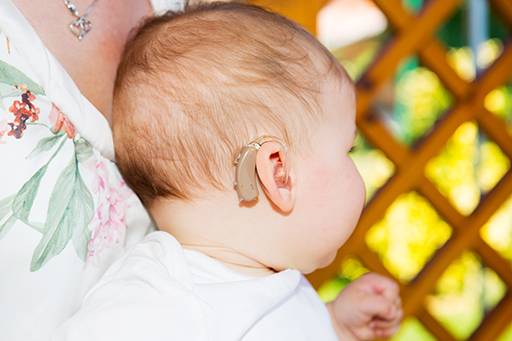
Activity 1.4 Barriers for hearing impaired or deaf children
Ade is three years old and has recently joined your nursery. She is profoundly deaf and is waiting to have a cochlear implant. A cochlear implant is a hearing device that converts sound into electrical signals. It is fitted during an operation (National Deaf Children’s Society, 2019).
You have watched Ade in the nursery and have noticed how much she likes to play at the water and sand area when no one else is there and it is quiet. You have noticed that Ade is not joining in social activities with other children and she often stands aside to watch others closely. Ade likes to help adults with everyday tasks like tidying up, sweeping up or preparing food for a snack. Sometimes when Ade is deeply involved in water play, she vocalises with excited, high-pitched sounds.
What can you do to support Ade’s learning? Before you answer this question, you might find it helpful to find out more about the experience of being deaf. Have a look at these two websites:
Write a list of the ways that you could support Ade.
What might you change about what you do?
What might you change about the nursery? Think about different sensory experiences and ways to support social interaction.
When you have finished click on ‘Save and reveal discussion’ to gain more ideas.
Discussion
It is very important that ELC staff understand how a nursery space – indoors and outdoors – is experienced by a child who is deaf. This experience will influence both social interactions and learning. Making practical changes and thinking differently about communication to make it easier for a child who is deaf to enjoy and explore their play with other children is likely to benefit all the children in the setting.
Here are some practical ideas that could be taken to support Ade:
- When communicating with Ade, make sure you are at her level (as you would with all young children). It helps to have eye contact and that Ade can see your face, mouth and expressions. Leave plenty of time for Ade to process your communication.
- Model and value different ways of communicating. Explore how facial expressions and gesture and vocal sounds can promote communication. Again, this will be useful for all children in your setting. Reading emotions through facial expression is an important social skill.
- Model your understanding of Ade’s communication to support children’s understanding of Ade’s communication. When Ade vocalises her enthusiasm for play you can mirror Ade’s enthusiasm with words: ‘Ade, you love the water don’t you?’. You are valuing her communication and helping other’s to understand her communication.
- Ade likes to play in areas that are quiet. How can you change the sound in your nursery? Can you reduce echo and clatter with more soft furnishings? Could rugs or curtains be used here?
- Can you set up more sensory activities like sand and water play to ensure children are more evenly spread across these resources? This might reduce the noise and make more areas appealing to Ade. Consider clay, soil/mud, gloop or coloured rice.
- Introduce more multisensory experiences, such as a light box, colour paper and fabrics. Make more opportunities for baking, a sensory experience that suits Ade’s preference for being with adults or it could be one adult with a small group of helpers.
- Introduce more visual aspects to all children’s experience of nursery. Introduce signing or actions along with singing. Bring props to story telling.
- Support Ade’s interest for helping adults by making sure child-sized tools are available, for example, a sweeping brush. This might encourage other children to join her in a shared, sociable task.
- Research information about cochlear implants so that you are knowledgeable and confident about using hearing technologies. This is important so that practitioners can work with her family and help to support Ade before she goes to hospital, as well as being ready to meet her needs when she returns to nursery.
As you’ll have seen, the National Deaf Children’s Society have several resources and tools for practitioners and provides more insight into the experience and identity of being deaf.
Deaf children may struggle with self-esteem and confidence because of the communication barriers they experience when they are poorly supported in mainstream settings. Part of your role is making sure you are building Ade’s confidence by changing your practice to include her in your nursery community. This includes learning more about the positive experiences associated with being deaf as you tune into and value Ade’s experience of the world.
In this example you have explored some ideas of how you can adapt the environment for a deaf child. However, they are not the only ones you have to address in order to ensure you are including children with a disability such as deafness. Deaf children may struggle with self-esteem and confidence because of the communication barriers they experience, so praising appropriately and being positive about deafness is important.
1.4 Inclusive relationships with children
It is always important to develop inclusive relationships with children and key to doing this is knowing the children in your setting and understanding their behaviour. How children express themselves and how they behave can help you to identify additional needs they may have. The CIRCLE Collaboration materials have been developed to help ELC practitioners understand children’s behaviour.
Using the CIRCLE approach
In 2011 a group of professionals with expertise in child health and education created a toolkit aimed at supporting practitioners to understand children’s behaviour. (‘CIRCLE’ stands for ‘Child Inclusion Research into Curriculum Learning Education’.)
This resource is available to settings working in Edinburgh. If you work in this local authority you could talk to your colleagues to find out more. If you work elsewhere, perhaps your authority and health board have produced similar toolkits or resources to help you.
There are other online resources available that you might find useful in helping you reflect on the environment you are creating and how you respond to children as a team.
Here is a list put together by NHS Lothian.
Find what out what your local authority has to offer. You might find resources outside Scotland helpful too. Take a look at this free online resource from PenGreen:
Summary
In Week 1 you have considered some of the ways that you may be able to improve your practice so that you are as effective as possible in supporting children with additional needs. You were introduced to some of the key terminology for thinking about additional support for learning.
You then explored the different emotions that children might have when faced with a new challenge and considered the different ways you can provide support. Some of this might be part of your everyday practice but some solutions may require additional support from other organisations.
Now complete the reflection activity below to complete the week’s learning.
Reflection activity
Use your learner journal to make notes about this week’s content and consider how it can positively impact your practice to improve the experience for children with ASN. (You can also type into the box below then copy and paste the text into your learner journal.)
After you have made your notes, save the learner journal file to use again for the remainder of the module.
Reflection table for Week 1
| Source of knowledge | |
| Key point | |
| How has this made me think? | |
| So what have I learned? | |
| Next steps: what can I improve or what more do I need to know? | |
| Next steps: what improvements can I make to my practice? |
(Adapted from Appleby and Hanson, 2017)
Next week
In Week 2 you’ll cover inclusivity for children with ASN in early years settings in more detail.
Now have a go at the Week 1 practice quiz.
